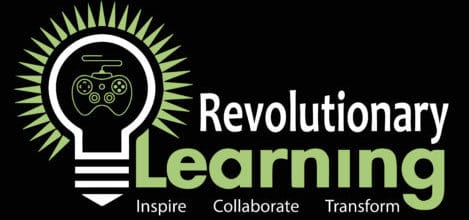David Seelow, PhD
Twine is a free open-source software used to create interactive experiences. The software can be downloaded and launched from a desktop or used online. Developed by Chris Kilmas back in 2009, Twine has proven to be an ideal tool for writing interactive fiction which parallels the kind of interactive experiences today’s students have come to expect from video games.
Authors/designers can create extended narratives, in both fiction and nonfiction genres, ranging from Zoe Quinn’s long detailed Depression Quest-which hovers on the border between fiction and creative nonfiction, to Anna Anthropy’s ten second Queers in Love at the End of the World. You can use Twine strictly to write narrative texts or you can use Cascading Style Sheets and Java Script to create more sophisticated games with inventories, battles, and scores. However, at the core, Twine allows anyone to create interactive stories and experiences with no programming knowledge. The basic software can be easily learned in a single class period. Additionally, Twine publishes to HTML making the final products easy to share and play on the web. Consequently, Twine enables more individual and indie game development, and supports both the Do It Yourself movement and Maker Culture, both of which significantly enhance student creativity.
Twine can also be effectively used to teach critical thinking and thoughtful decision making. Since Twine presents the player with key decision points, a teacher can create very short Twine exercises that confront a student with a decision that require the application of reason and research. The teacher designs a small scenario such as an after-school activity and ends the scenario with a decision point. For example, a middle school student is asked by a peer to vape. Should she or shouldn’t she vape? The decision must be that of the student. In Twine, the choice the student makes will result in immediate feedback constructed by the teacher. The game’s immediate feedback mechanism offers great learning opportunities. Not only do these short interactive exercises, something akin to Clark Aldrich’s work on Short Sims, allow for instruction within an academic subject, but they also offer practice in the vital and inadequately taught skill areas of decision making, critical thinking and problem solving.
With the plethora of misinformation circulating in today’s world we want students to make informed decisions that integrate content knowledge and research into authentic real-world decision making.1 For example, should the government heavily subsidize the manufacture of electric cars? Should gasoline be more heavily taxed, like cigarettes to discourage excessive driving etc.? Should cars be banned from urban centers and money directed toward urban space to encourage walking, small business development and community? Should meditation be taught in public schools? The more the instructor maps out decision branches the more students will experience the long-term consequences of decisions. Students often make decisions for immediate benefit that turn out to be very ineffective in the long term. Twine helps students think and reason in a planful long term fashion. You can create these Twine experiences for classroom discussion and pause to debate the alternatives and potential consequences of each decision and their likely consequences or offer the exercises online as between class assignments for students to play and reflect on and then discuss their thinking in the next class.
An opening screen in a mini-Twine experience would display as follows which each choice in bold typeface (normally a different color) representing a different choice for the player/reader.
You have a B average in International Politics, but you have prognosticated writing the final paper which is worth 25% of your grade. You also have 3 final exams in other classes to study for.
Should you write a quick paper quite possibly risk a C, and possibly also score poorly on your other exams?
Should you blow off the paper entirely and definitely end up with a C but improve your chances of high grades on your 3 exams?
You can offer as many options as you like. Each response leads to another passage showing the result of the player’s choice. That choice can end the exercise, or you can extend each response into different learning paths. Students will learn any decision has a degree of uncertainty. You can blow off the paper and still score poorly on the exams. However, you want students to learn to the probability of a decision having a good result. The more students learn to make deliberative decisions the better their results will be in school and life.
In conclusion, Twine is a valuable tool every teacher would benefit from learning and using in the classroom.
Please consider purchasing or asking your library to purchase my new book Games as Transformative Experiences for Critical Thinking, Cultural Awareness and Deep Learning: Strategies & Resources (CRC Press 2023).
Note
1 For a good discussion of how to teach decision making integrating solid scientific data see the following article from the National Science Teaching Association.
- Jenny M. Dauer, Amanda E. Sorensen, and P. Citlally Jimenez . “Using Structured Decision-Making in the Classroom to Promote Information Literacy in the Context of Decision-Making.” Journal of College Science Teaching—July/August 2022 (Volume 51, Issue 6)
